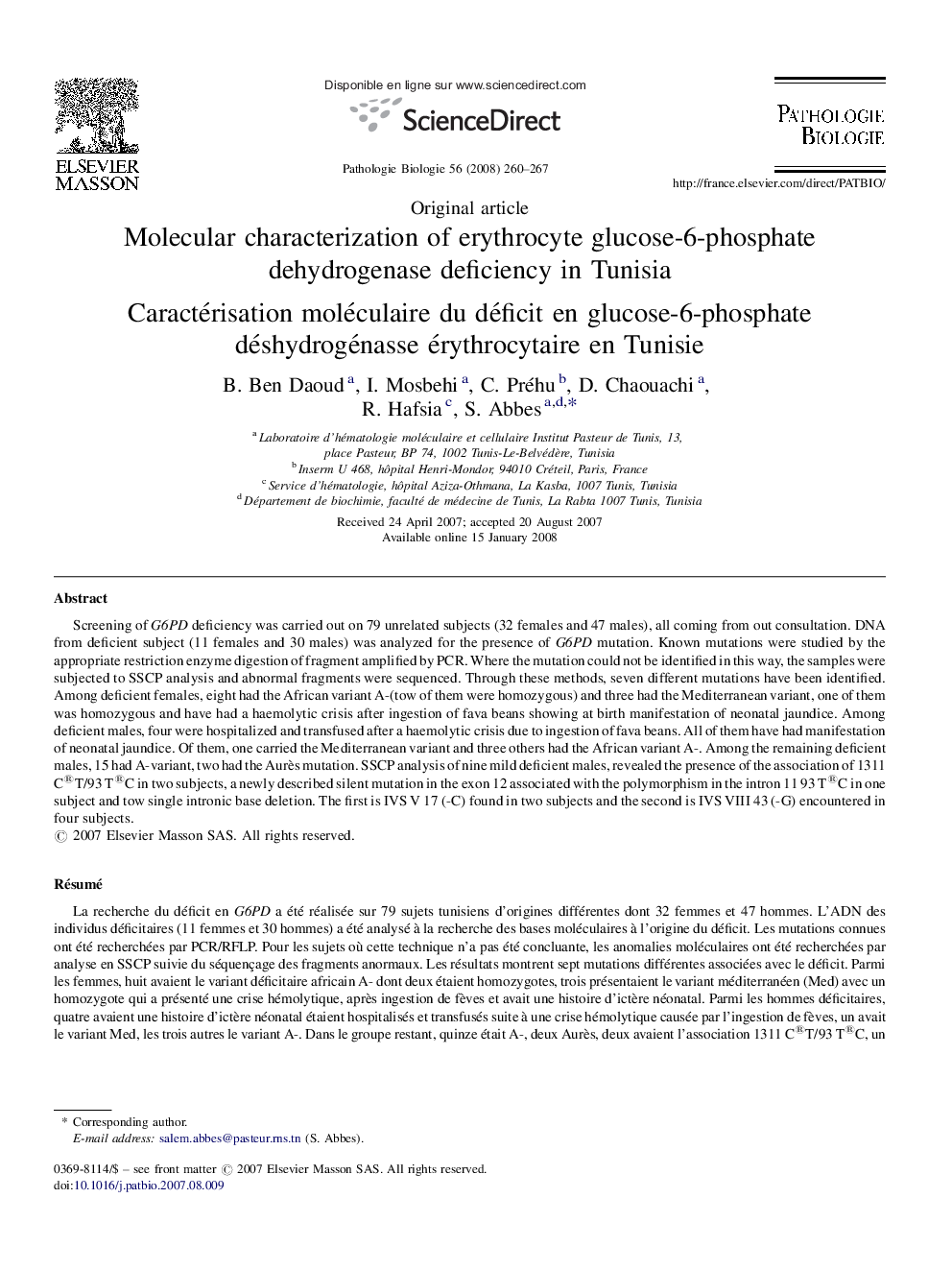| کد مقاله | کد نشریه | سال انتشار | مقاله انگلیسی | نسخه تمام متن |
|---|---|---|---|---|
| 4136710 | 1271932 | 2008 | 8 صفحه PDF | دانلود رایگان |

Screening of G6PD deficiency was carried out on 79 unrelated subjects (32 females and 47 males), all coming from out consultation. DNA from deficient subject (11 females and 30 males) was analyzed for the presence of G6PD mutation. Known mutations were studied by the appropriate restriction enzyme digestion of fragment amplified by PCR. Where the mutation could not be identified in this way, the samples were subjected to SSCP analysis and abnormal fragments were sequenced. Through these methods, seven different mutations have been identified. Among deficient females, eight had the African variant A-(tow of them were homozygous) and three had the Mediterranean variant, one of them was homozygous and have had a haemolytic crisis after ingestion of fava beans showing at birth manifestation of neonatal jaundice. Among deficient males, four were hospitalized and transfused after a haemolytic crisis due to ingestion of fava beans. All of them have had manifestation of neonatal jaundice. Of them, one carried the Mediterranean variant and three others had the African variant A-. Among the remaining deficient males, 15 had A-variant, two had the Aurès mutation. SSCP analysis of nine mild deficient males, revealed the presence of the association of 1311 C®T/93 T®C in two subjects, a newly described silent mutation in the exon 12 associated with the polymorphism in the intron 11 93 T®C in one subject and tow single intronic base deletion. The first is IVS V 17 (-C) found in two subjects and the second is IVS VIII 43 (-G) encountered in four subjects.
RésuméLa recherche du déficit en G6PD a été réalisée sur 79 sujets tunisiens d’origines différentes dont 32 femmes et 47 hommes. L’ADN des individus déficitaires (11 femmes et 30 hommes) a été analysé à la recherche des bases moléculaires à l’origine du déficit. Les mutations connues ont été recherchées par PCR/RFLP. Pour les sujets où cette technique n’a pas été concluante, les anomalies moléculaires ont été recherchées par analyse en SSCP suivie du séquençage des fragments anormaux. Les résultats montrent sept mutations différentes associées avec le déficit. Parmi les femmes, huit avaient le variant déficitaire africain A- dont deux étaient homozygotes, trois présentaient le variant méditerranéen (Med) avec un homozygote qui a présenté une crise hémolytique, après ingestion de fèves et avait une histoire d’ictère néonatal. Parmi les hommes déficitaires, quatre avaient une histoire d’ictère néonatal étaient hospitalisés et transfusés suite à une crise hémolytique causée par l’ingestion de fèves, un avait le variant Med, les trois autres le variant A-. Dans le groupe restant, quinze était A-, deux Aurès, deux avaient l’association 1311 C®T/93 T®C, un avait une mutation intronique nouvellement décrite la IVS XI-93 T® C et six avaient des microdélétions, dont un présentait la IVS V 17 (-C) et quatre la IVS VIII 43 (-G).
Journal: Pathologie Biologie - Volume 56, Issue 5, July 2008, Pages 260–267